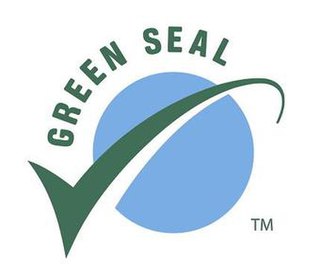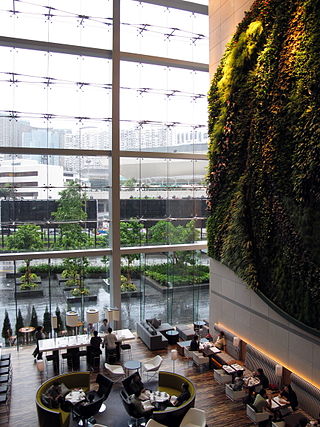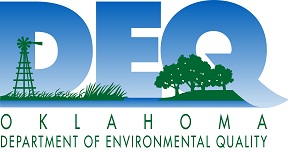Environment and Climate Change Canada, is the department of the Government of Canada responsible for coordinating environmental policies and programs, as well as preserving and enhancing the natural environment and renewable resources. It is also colloquially known by its former name, Environment Canada.

Waste hierarchy is a tool used in the evaluation of processes that protect the environment alongside resource and energy consumption from most favourable to least favourable actions. The hierarchy establishes preferred program priorities based on sustainability. To be sustainable, waste management cannot be solved only with technical end-of-pipe solutions and an integrated approach is necessary.

Disney's Wilderness Lodge is a resort hotel located at the Walt Disney World Resort in Lake Buena Vista, Florida. Opened on May 28, 1994, the resort is owned and operated by Disney Parks, Experiences, and Products. Disney's Wilderness Lodge is located in the Magic Kingdom Resort Area on Bay Lake. The resort is located near Disney's Fort Wilderness Resort & Campground. A similarly themed resort, Disney's Grand Californian Hotel & Spa, is located at the Disneyland Resort in California.

The Walt Disney World Swan is a resort hotel located between Epcot and Disney's Hollywood Studios in the Walt Disney World Resort in Bay Lake, Florida, and across from its sister resort, the Walt Disney World Dolphin. Both hotels were designed by Michael Graves, and are connected by a palm-tree lined covered walkway crossing a lagoon. The Swan opened on January 13, 1990, as part of a joint venture between the Walt Disney Company, Tishman Hotel Corporation, MetLife and Starwood Hotels and Resorts, which was merged into Marriott International in 2019. The land the resort occupies is owned by the Walt Disney Company and leased on a 99-year term to the Tishman Hotel Corporation and MetLife who own the buildings and contract the operation to Marriott International under the Westin Hotels & Resorts brand. The Walt Disney World Swan and Dolphin are a part of the Walt Disney Collection of resorts; because of this they are Disney branded and guests of the resort have access to special Disney benefits available to Disney Resort Hotel guests only.

Environmental planning is the process of facilitating decision making to carry out land development with the consideration given to the natural environment, social, political, economic and governance factors and provides a holistic framework to achieve sustainable outcomes. A major goal of environmental planning is to create sustainable communities, which aim to conserve and protect undeveloped land.

A green-collar worker is a worker who is employed in an environmental sector of the economy. Environmental green-collar workers satisfy the demand for green development. Generally, they implement environmentally conscious design, policy, and technology to improve conservation and sustainability. Formal environmental regulations as well as informal social expectations are pushing many firms to seek professionals with expertise with environmental, energy efficiency, and clean renewable energy issues. They often seek to make their output more sustainable, and thus more favorable to public opinion, governmental regulation, and the Earth's ecology.

The Florida Department of Environmental Protection (FDEP) is the Florida government agency responsible for environmental protection.

Green Seal is a non-profit environmental standard development and certification organization. Its flagship program is the certification of products and services. Certification is based on Green Seal standards, which contain performance, health, and sustainability criteria.
Audubon International is a not for profit 501(c)(3) environmental education organization based in Troy, New York. Established in 1987, the organization works with communities, developments, resorts, and golf courses in 36 countries to plan and implement sustainable natural resource management practices, as well as receive public recognition for employing sound environmental stewardship.

An eco hotel, or a green hotel, is an environmentally sustainable hotel or accommodation that has made important environmental improvements to its structure in order to minimize its impact on the natural environment. The basic definition of an eco-friendly hotel is an environmentally responsible lodging that follows the practices of green living. These hotels have to be certified green by an independent third-party or by the state they are located in. Traditionally, these hotels were mostly presented as ecolodges because of their location, often in jungles, and their design inspired by the use of traditional building methods applied by skilled local craftsmen in areas, such as Costa Rica and Indonesia.

The Oklahoma Department of Environmental Quality (DEQ) is a department of the government of Oklahoma under the Governor of Oklahoma. It is responsible for protecting human health and for safeguarding the natural environment: air, water, and land. DEQ is chiefly responsible for the environmental policy of Oklahoma. It is governed by a thirteen member Environmental Quality Board appointed by the Governor, which in turn appoints an Executive Director to administer the Department.

Sustainable engineering is the process of designing or operating systems such that they use energy and resources sustainably, in other words, at a rate that does not compromise the natural environment, or the ability of future generations to meet their own needs.
This article provides examples of green building programs in the United States. These programs span the public, private, and non-profit sectors, and all have the goal of increasing energy efficiency and the sustainability of the built environment.
The California Department of Resources Recycling and Recovery is a branch of the California Environmental Protection Agency that oversees the state's waste management, recycling, and waste reduction programs. CalRecycle was established in 2010 to replace the California Integrated Waste Management Board. It is known for administering the California Redemption Value (CRV) program, among other responsibilities.

Environmental engineering science (EES) is a multidisciplinary field of engineering science that combines the biological, chemical and physical sciences with the field of engineering. This major traditionally requires the student to take basic engineering classes in fields such as thermodynamics, advanced math, computer modeling and simulation and technical classes in subjects such as statics, mechanics, hydrology, and fluid dynamics. As the student progresses, the upper division elective classes define a specific field of study for the student with a choice in a range of science, technology and engineering related classes.
Conserve Georgia was launched on April 24, 2008, as a public education program tasked with fostering a culture of conservation among government agencies, businesses, academic institutions, non-profit organizations and residents in Georgia.
Environmentally sustainable design is the philosophy of designing physical objects, the built environment, and services to comply with the principles of ecological sustainability and also aimed at improving the health and comfort of occupants in a building. Sustainable design seeks to reduce negative impacts on the environment, the health and well-being of building occupants, thereby improving building performance. The basic objectives of sustainability are to reduce the consumption of non-renewable resources, minimize waste, and create healthy, productive environments.
A sustainability organization is (1) an organized group of people that aims to advance sustainability and/or (2) those actions of organizing something sustainably. Unlike many business organizations, sustainability organizations are not limited to implementing sustainability strategies which provide them with economic and cultural benefits attained through environmental responsibility. For sustainability organizations, sustainability can also be an end in itself without further justifications.
The California Green Lodging Program is an initiative in California that encourages hotels in the state to save water and energy and reduce waste. It is run by the California Department of General Services. Hotels are evaluated on a set of environmental criteria and, depending how well these are satisfied, certificates are awarded at two levels.
In an effort to create a more sustainable environment, Clemson University, located in Clemson, South Carolina, has developed several initiatives to conserve energy and educate students along with the public about fossil fuels and natural resources. Clemson has set both short- and long-term goals, on a scale of up to 15 years. Known as the Solid Green campaign, Clemson has a mission to reduce total energy used by 20% in the year 2020, reach a goal of becoming net-zero in carbon emissions, and replace the coal-fired boiler in 2015. Clemson has the long-term desire to become much more energy efficient, climate considerate and recycle more. One way of funding these initiatives is the Student Sustainability Fee, also known as the Green Fee, which students can elect to pay $10 with their tuition each semester.










